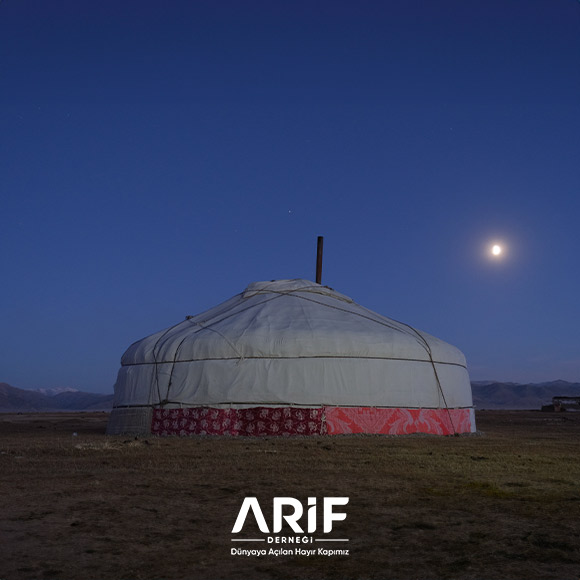Blog
What Is In an Old Turkish Yurt?

The Old Turkish Tent raises curiosity in people’s minds due to the unknown aspects of what it contains within its lifestyle. So, what exactly does a Turkish tent hold?
- Tüynük/Tündük (toono)
It serves as both the chimney and the window of the house. It is usually covered with felt called tümüldük (örh). The tümüldük is closed at night and opened during the day. It should be opened at dawn. If a house is late in opening it, people consider them lazy. - Endek/Kütü (deever)
This is the felt covering that covers the roof of the house. It is further covered with a fabric called ak kösk (cagaan bürees), ensuring the house appears white. Black houses are said to indicate the presence of servants. - Sırguk (bagana)
This is what is referred to as the pillar of the house. It holds the tündük in place. - Ok (un’)
The wooden strips that form the upper structure of the house. The lower ends are attached to the terim (beams) and the upper ends are placed in the notches of the tüynük. - Oçuk (golomt)
The hearth is placed right in the middle of the house. No items are passed over or taken from the hearth. A tağan (tulga), which is a three or four-legged stand, holds the cooking pot where food and tea are made. - Tör (hoimori)
There is an error in the image. The low table seen in the picture represents the place of the house’s owner (i.e., the husband’s side). Male guests sit in order of importance on the right, while the left side is reserved for women. Therefore, the right side is where the man of the house manages the hearth. Thick felt pieces embroidered with threads (called sırmak or şirees) are laid on the ground for seating. - Terim (hana)
This is the term used for the structure of the walls of the house, which are made from wooden beams. The size of the house is referred to as “6, 7, or 8 terim.” - Turdak (tuurag)
The felt covering that surrounds the terim. The term keçe turdaklı refers to those who are nomadic in the steppe. Türk turdaklı specifically refers to those who are Turkish and nomadic. The ak kösk also covers this. - Serpme (üüd)
Before the door (called haalga) was added, the opening was covered by a large felt piece. This tradition continues today. In Turkish tents, doors are double-winged and face the direction of the sunrise. In Mongolian tents, however, the door is single-winged and faces the south. The capital of the Buriat people, “ulaan-üüd” (red serpme), gets its name from this term. - Kapsa (hatavç)
These are the wooden supports that form the entrance opening. The ends of the terim are connected here. The ak kösk is connected from the outside by tolgoi (head), dund (middle), and adak (foot) straps to the kapsa. The piece that connects the lower ends of the kapsa is called eşik (bosgo), and the piece connecting the upper ends is called sunı (totgovç).
